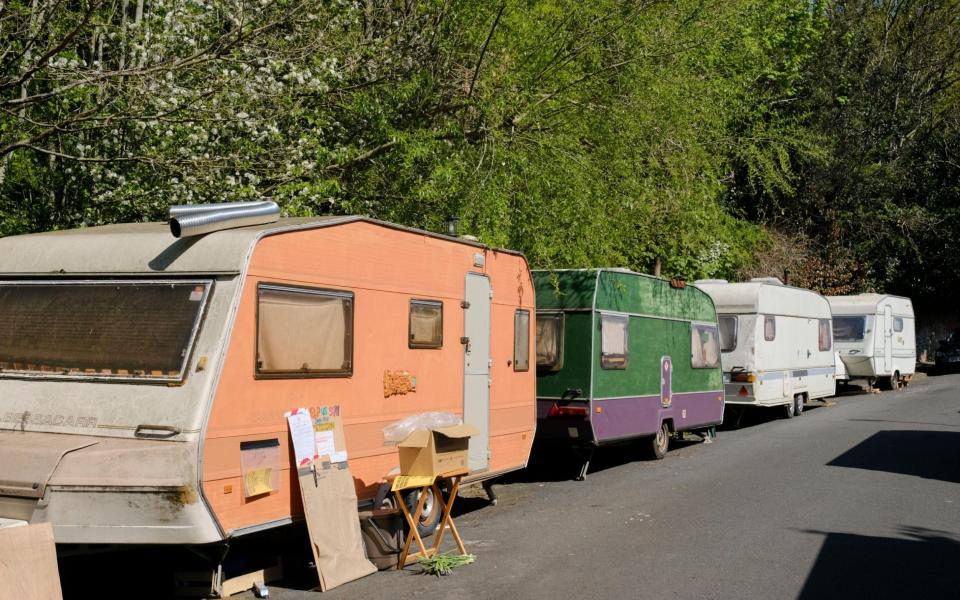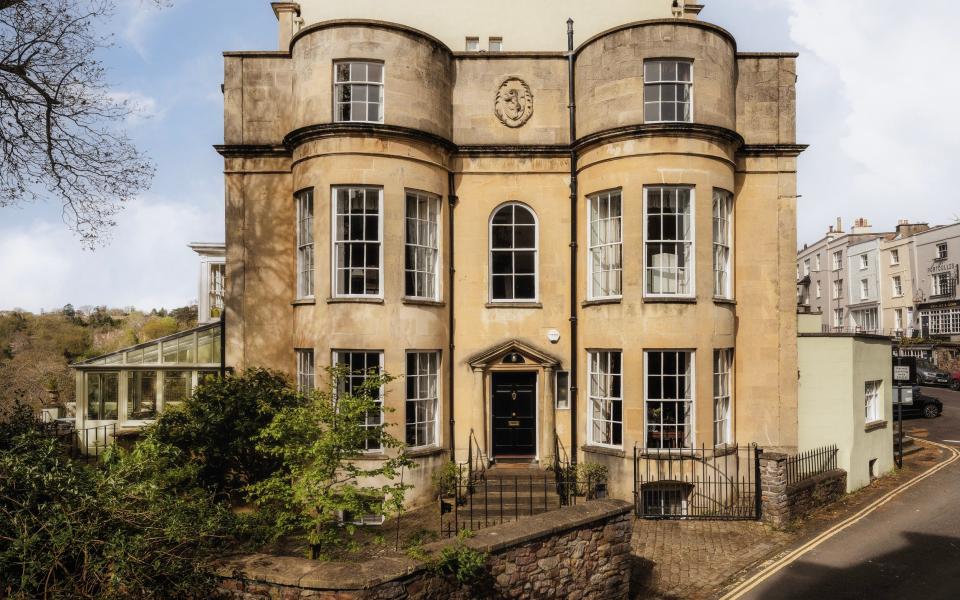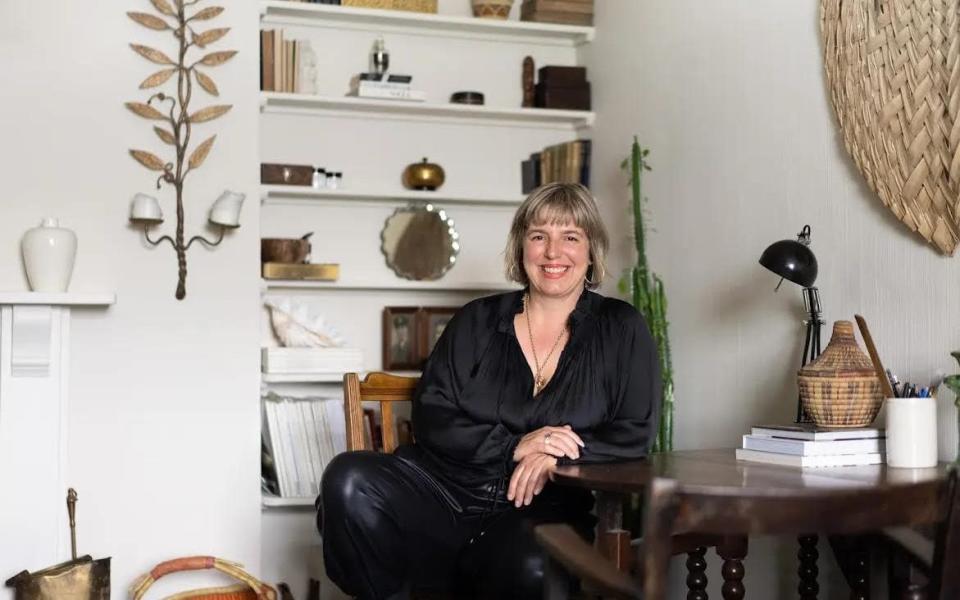How Bristol became as unaffordable as London

Close to the iconic Clifton Suspension Bridge, and on the doorstep of some of Bristol’s most expensive properties – including a house that recently sold for more than £4m – lives Britain’s biggest van-dwelling community.
Nicknamed “caravan city”, there are 800 people living in mobile homes and vans, including many parked alongside the Downs, the 210 acres of greenery fringed by such sought-after residential areas as Clifton, Sneyd Park and Redland.
A minority choose van-living for the lifestyle, but most do it out of necessity. They are unable to afford to live in a city where rents are the second highest in the country, after London, and house prices have risen by 25pc since 2019 to an average of nearly £350,000, according to Hamptons estate agency.
Rupert Oliver – the estate agent behind the £4m-plus sale, which was one of three off-market sales he handled last year with a combined value of £10m – routinely deals with the other extreme. Buyers with multi-million pound budgets who want a classic townhouse in upmarket Clifton within walking distance of “the College”. That’s Clifton College, the turreted public school that charges up to £16,300 a term.

In recent years, many of Bristol’s high-end buyers have migrated there from London. Hamptons calculates that nearly 7pc of buyers in Bristol in 2023 were from London, compared with around 1pc in 2012. It’s a market driven largely by families in search of the city’s high-performing private schools, says Oliver, “and we have the infrastructure – big employers such as Hargreaves Lansdown, lots of law firms, the aerospace industry and tech, including the university’s new tech campus near Temple Meads station”.
Bristol’s appeal to Londoners “was exacerbated during the pandemic with the ‘race for space”, adds Charlotte Strang at Strang & Co buying agency. “People relocated to be closer to family, or where they grew up, or saw the appeal of gaining much greater value for money than in London.”
But the gap is closing – and now Londoners are finding themselves priced out of the south-west city. While the capital’s house prices have risen by 10pc since the pandemic, Bristol has recorded 25pc house price growth. Its economy is predicted to grow by 8.9pc over the next five years, outpacing the rest of the UK, according to the global real estate services firm Avison Young.
A decade ago, Bristol’s house prices were 48pc lower than London; now the disparity is just 32pc. Buyers are straying to the surrounding Somerset or north Gloucestershire countryside or the coast for better value for money instead.
Andrew Cronan, from Recoco Property Search, recently helped one London couple in their mid-30s who were looking to relocate to Bristol for work and had a budget of just under £1m. “They quickly realised that the sort of townhouse they wanted in the best areas easily exceeds the £1m mark, so they cast the net wider and instead bought a four-bedroom Victorian townhouse in [the seaside town of] Clevedon for £900,000,” says Cronan. “We have also helped buyers who were priced out of Bristol find properties in coastal towns including Weston-super-Mare and Burnham.”
Londoners searching in Clifton, adds Oliver, are often shocked at how little they are left with after they sell up in the capital. “They’re selling 1,800 sq ft houses in Balham or Shoreditch and finding that even though they may increase their square footage in Bristol, so they’re getting scale, they aren’t getting any change from their £2m.”
And Bristol’s biggest spenders often don’t come from London these days anyway. The £4m-plus sale – a house price that’s practically unheard of in Bristol – was to a local buyer. “I tell vendors, ignore the local market at your peril. There are a lot of fantastic entrepreneurial business people in Bristol who are releasing some capital,” says Oliver.
Another recent £3.5m sale in Clifton was to “a local Bristol family, cash buyers, where the husband works in finance. Again, they moved to be within walking distance of their children’s school,” adds Claire Whisker, founder of First in the Door, a platform that matches home hunters with buying agents.
PropCast, which takes the temperature of micro property markets based on the proportion of homes for sale that are under offer or sold subject to contract, describes anything over 35pc as a competitive sellers’ market. Bristol’s top five postcodes score 66pc to 72pc. The hottest market, BS7, takes in a range of areas including old-school affluent Stoke Bishop and more recently up-and-come Bishopston.
PROPCAST GRAPH???
“As well as strong migration from London,” says Whisker, “one of our buying agencies is seeing big international appeal too – mainly from Hong Kong and UAE-based clients who have children studying at Bristol University and who see a flat in the city as a good investment over the next four years.”
Such demand – faced with limited supply – is fuelling the unaffordability problem that is preventing many Bristolians from being able to buy or upsize in their own city. “The extremes in Bristol are becoming ever greater,” says Samaya Ling, 48, the founder of interior design company Porter & Gold, who rents a two-bedroom flat with her son in Redland – an area popular with families for its proximity to good schools and the Downs.

She realises she may need to leave her hometown to get on the property market. “Two-bedroom, 1930s houses in Redland’s backstreets cost from £700,000 and three-bed Victorian or Georgian houses are up to £1.2m,” says Ling. “I’m looking at buying in Kingswood or Stapleton where you can find a slightly rundown 1930s house for around £290,000. I’ll renovate it and wait a few years until the area goes up. Or I may move to be near family in Clevedon.”
Crossing the Suspension Bridge from gilded Clifton into rural Nailsea, Failand or Abbots Leigh has long been a way for Bristol buyers to find better value for money. But agents are now seeing buyers with a different bridge in mind – the Severn Bridge – as they look to put down roots in south Wales instead and commute to Bristol for work.
Winston Gallagher, 37, who runs a heating and renewables company, has lived in Bristol for 22 years and knows no one in Wales – but he’s moving his family to Newport in order to be able to afford to buy. He pays £1,500 a month to rent a four-bed house in Stoke Gifford, in northern Bristol.
“To buy a similar house around here will cost £350,000-£400,000, which is ridiculous. We can’t even raise the 10pc deposit – and we’re both self-employed so banks are refusing to lend to us,” says Gallagher. “We can find a four-bed house in Newport from about £190,000.”
Developers in Bristol are tackling the affordability issue in various ways. Artisan’s Everards Printworks in the Historic Quarter of the city centre has a ‘try before you buy’ scheme where you can rent from £1,200 per month – and if you go on to buy, the rent paid will be used as the deposit towards flats starting from £255,000 through Knight Frank.
One Lockleaze, a new scheme by Linden Homes, is being marketed as affordable housing, with two-bed homes starting at £360,000. But with the average household income in Lockleaze just £27,300, points out Rose Hulse, a Californian-born entrepreneur who is standing as the Conservative Party candidate for Bristol North East, “the 48pc of the local population that still rents and whose income prices them out of the Lockleaze market-rate homes are also priced out of this ‘affordable’ housing development. They will be forced to move out of the area they grew up in.”
Hulse points out that Bristol’s house prices have risen by nearly 90pc in the last 10 years, the third highest increase in the UK. “People tell me they cannot buy a home for their family, despite both parents working full-time. They are looking at places including Cardiff, despite their jobs being based in Bristol.”
As you stand on Bristol’s Downs and take in the vista of multi-million pound houses and caravans that have become people’s permanent homes, it’s a stark tale of two cities.

 Yahoo Finance
Yahoo Finance 